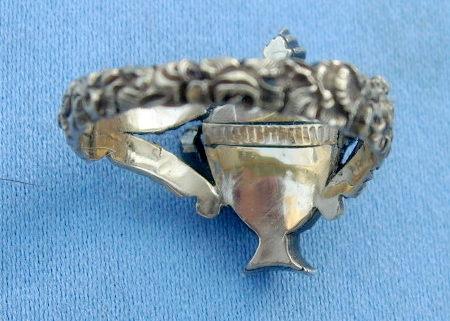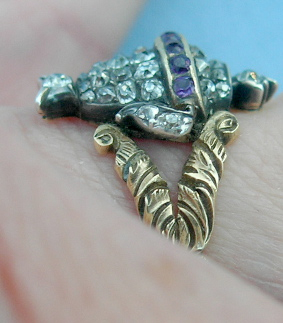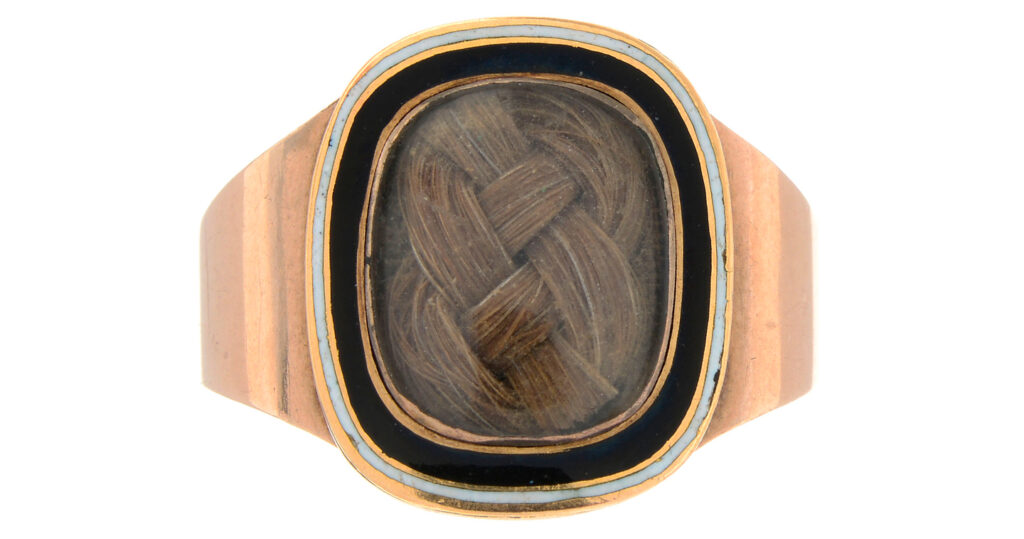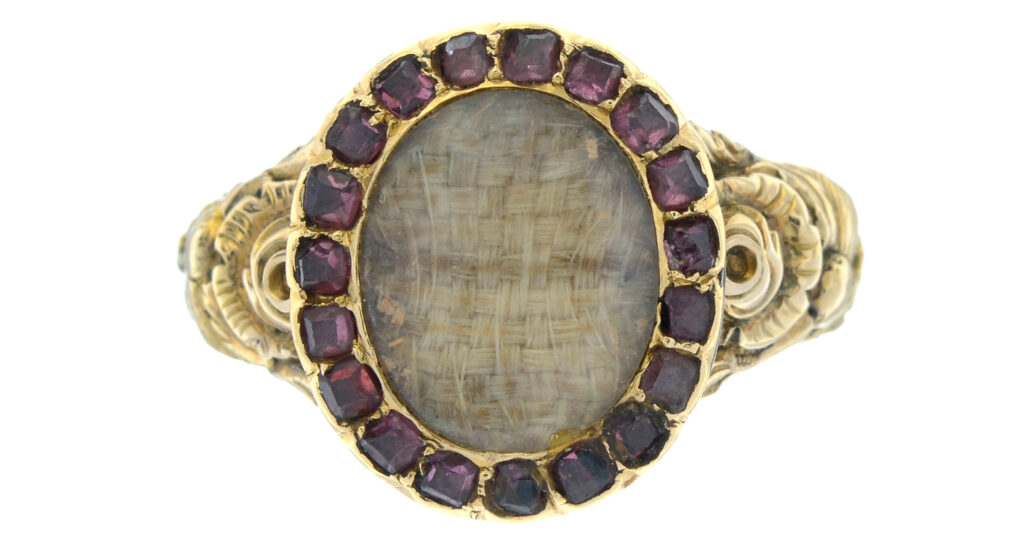Amazing Georgian Diamond Urn Ring
There are many elements to this ring that put it in a specific spot in time. Let’s take a moment to analyse the piece and discover some of these motifs and flourishes that can be used to evaluate contemporary pieces.
Firstly, let’s note the urn itself. The diamond and amethyst urn is a wide shape that follows the contour of the finger itself. Notice how the urn, which is essentially the bezel, bends in the interior, which makes the ring similar to the oval and navette ring styles of the late 18th century. This particular ring, however, is adapting the oval style more than the navette, hence it leans towards the later time of the Neoclassical era. This puts the ring into a c.1800-1810 bracket for dating. We also have the use of the gems themselves, which puts this ring in the upper bracket of quality for its time.
If you’ve been reading Art of Mourning for some time, you’ll notice the most important design motif for dating a piece; that being the shoulders, shank and band. Here, we have the split shoulders that form the band, involving a design motif that was very common for the c.1800 period. These are motifs that were adapted in c.1820 by the Gothic Revival period and used in abundance, but the great difference between these styles is that this heavy nature pattern (usually involving the acanthus, roses and other floral gold work) usually flanked black enamel and the ‘in memory of’ dedication in bands and other jewels. For more on this pattern and some further examples, please read Stages of Mourning in Early 19th Century Rings. It’s the two-pronged shoulders that set this ring apart, they are quite delicate and not overcoming the urn motif, but complementing it.
So, we have the urn, which is lusciously complemented with an abundance of gems and its sentiment of grief. The Gothic Revival era had not become the mainstream standard of jewellery design by this time, but the Neoclassical era that had existed from c.1765-1800 was certainly becoming more conservative in its style and following more gem and hairwork based designs, rather than depicting the sentimental colour or sepia artwork on ivory that had been so popular. The urn still denotes the wearer to show the allegory of death, though it is obvious, but without any religious connotations. Here, mourning is becoming what it would develop into for the 19th century and beyond. The memento mori symbolism did not return, but the ‘self’ remained the primary focus of mourning.
Further Reading
– Gothic Revival in Culture and Jewellery: Part 1, c.1740-c.1850









